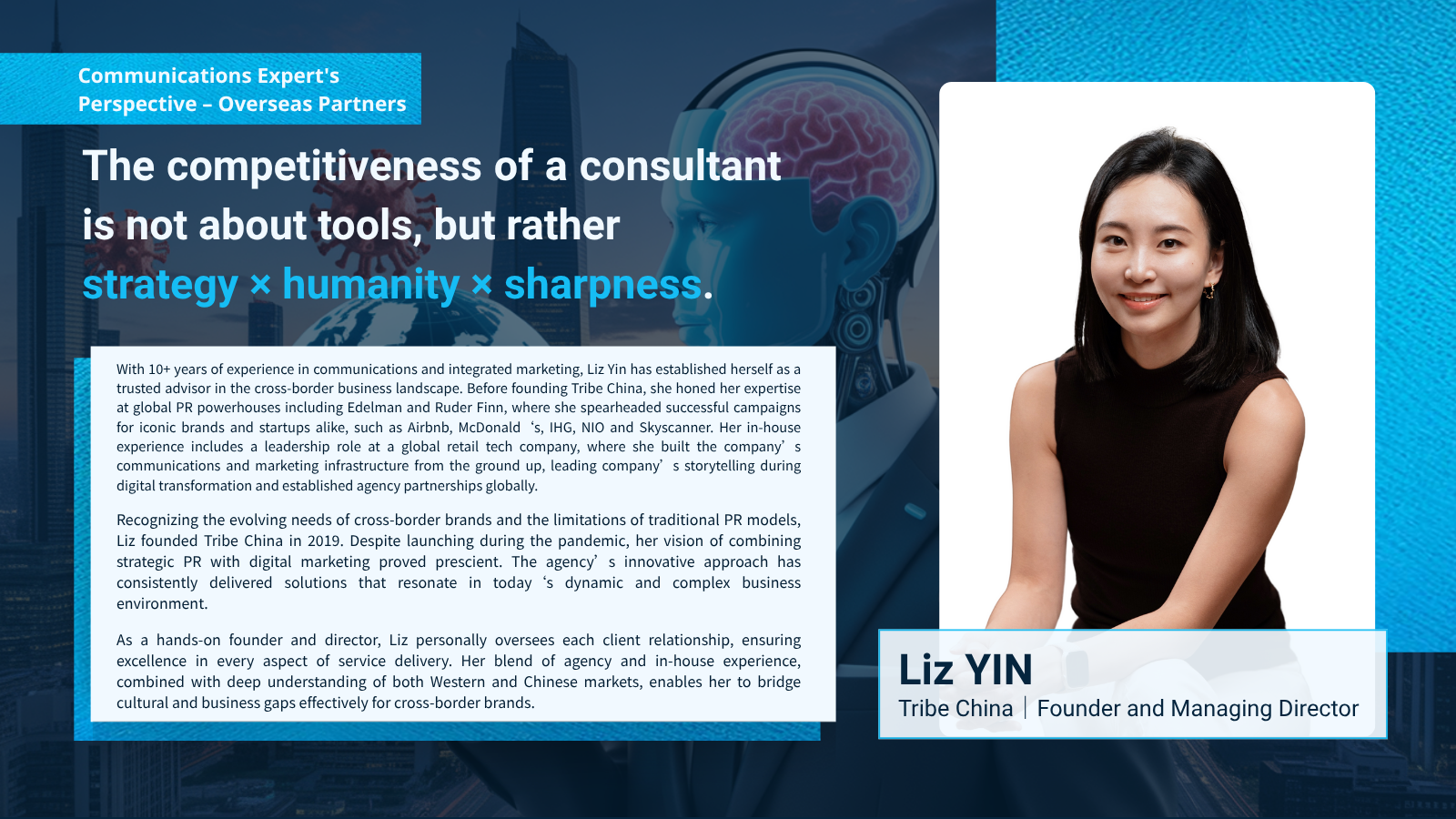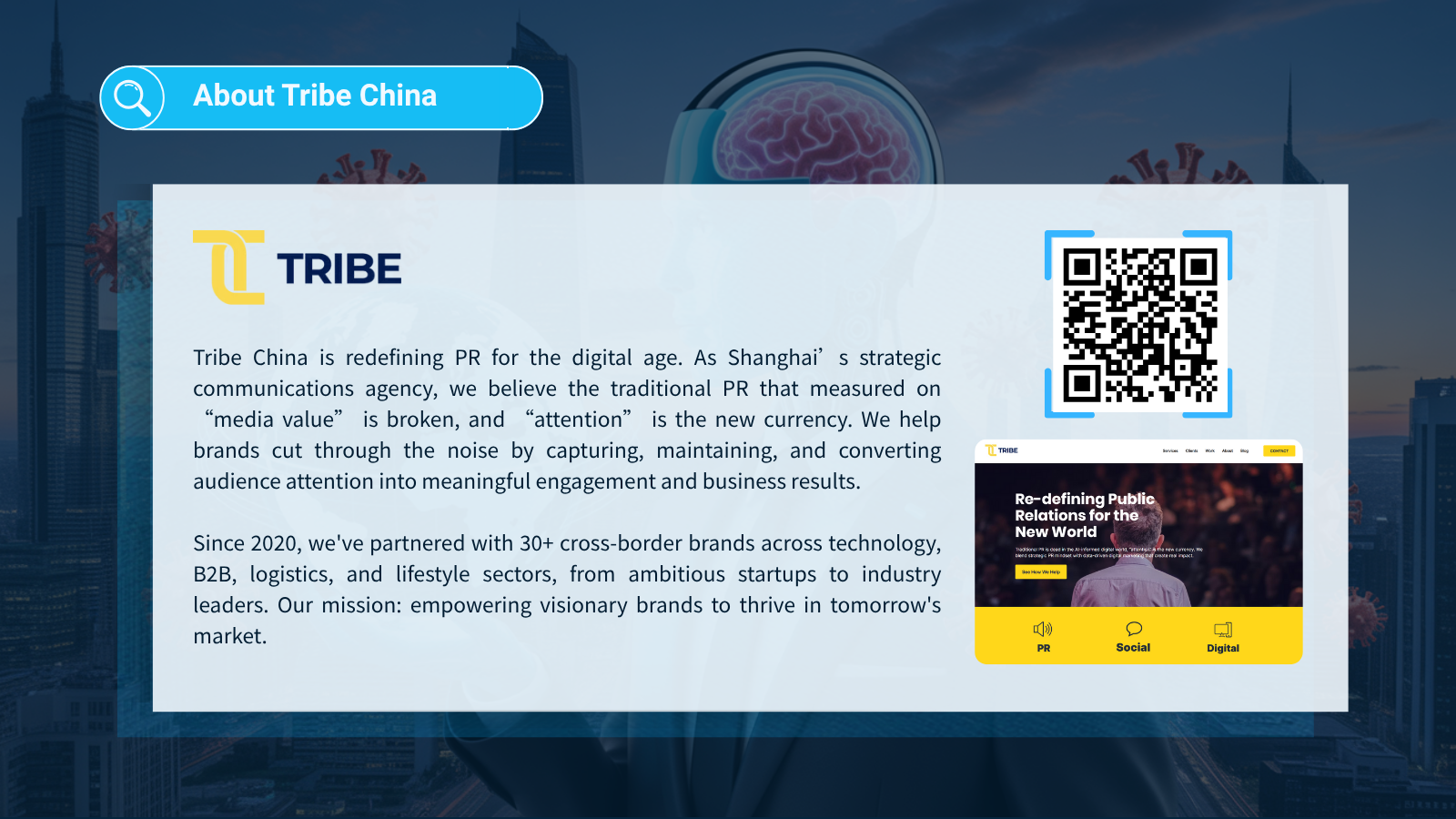
(Excerpted from Dear VOCAL MIDDLE: The 2025 Mid-Year Report )
“Dear VOCAL MIDDLE:” is VOCAL MIDDLE's biannual flagship insight report, published mid-year and year-end each year. Every edition revolves around one central theme: the future.
This time, we chose the theme “PR Next: The Future of Public Relations”, focusing on two key points:
The year 2025 marks a pivotal moment where the aftermath of the pandemic intersects with the widespread adoption of generative AI. Amid the profound shifts in the global communications ecosystem, we invited industry experts to collectively explore the implications of this transformation for the future.
Every job, role, and task within the communications field ultimately aims to create impact. If we say that the essence of creating impact is trust, then PR consultants represent the most fundamental, core function, role, and industry in the process of building trust.
This report not only reflects the views of VOCAL MIDDLE but also brings together partners from across the Asia-Pacific region, leaders from public associations, and communication education pioneers. Together, we ponder: as change and restructuring become the norm, how will the role of the PR consultant evolve from being “one among many” within the industry to becoming the central link connecting markets, businesses, organizations, and the public?
Expert Commentary: Tribe China|Founder and Managing Director - Liz YIN
The past five years have marked two pivotal turning points in human history.
A global pandemic compelled us to reexamine the relationships between people, and between people and work. Then came a revolution in AI, which redefined our understanding of creative productivity. These shifts have been especially profound for those of us in the communications industry.
For me personally, the journey from traditional public relations to leading a strategy-driven communications firm has been deeply shaped by both of these transformations. They have not only changed the way we work, but also reshaped the way we engage with clients, the media, and society at large.
The outbreak of COVID-19 disrupted the established rhythms of communication and reshaped the media ecosystem. On one hand, offline behaviors migrated online, driving demand for end-to-end brand experiences and content designed for full-funnel, multi-scenario engagement. On the other hand, the rapid rise of short videos, livestreaming, KOLs, and independent creators structurally changed the role of traditional media.
Content is no longer “produced and published”—it is now “interactive and instantly shareable.” With attention spans shrinking and communication windows narrowing, content must be faster, sharper, and more emotionally resonant than ever before.
When I first entered the industry, the “core asset” of a PR consultant was the media contact list stored discreetly in a desktop folder. Today, consultants must go far beyond maintaining media relationships. They must master the full media ecosystem and understand the distribution logic unique to each platform and content format. It's no longer enough to generate visibility—we need the power to guide public discourse and the skills to design for attention. By integrating media resources across channels, consultants help amplify a brand's voice and bring it into public view. Traditional media still holds authority, but relying on it alone is no longer sufficient.
At the same time, the expectations placed on communications have shifted. Companies no longer just seek to “increase brand awareness”—they expect communications to drive tangible business outcomes. PR and marketing are being asked to align more closely with core business goals and demonstrate commercial value. In essence, this challenges the traditional premise that PR works through subtle influence rather than directly driving sales.
But I see this not as a challenge, but as an opportunity—to return communication to its true purpose: influencing decisions. The only difference is that today's decision-making paths are more fragmented and more driven by algorithms. Consultants must understand clients' business from a strategic perspective and deliver content that is influential, not just influencer-friendly.
This is the long-term direction we've committed to at Tribe China: using strategy as our anchor, we integrate digital and social channels, platform-specific tactics, and emotional insights to build communication bridges that truly connect business goals with market outcomes.
Over the past year, as ChatGPT and generative AI tools have taken the world by storm, one question has weighed heavily on my mind:
“Will AI replace the value of public relations?”
My answer: AI will not replace PR—but it will replace consultants who fail to evolve.
From content generation and trend analysis to social listening and personalized scripting, the efficiency leap brought by AIGC (AI-generated content) is nothing short of astonishing. One person can now accomplish what once required an entire team. We're already seeing this play out globally, with tools like Jasper AI and Gimmefy being widely adopted by PR agencies and content marketing teams. Someone on LinkedIn even recently claimed, “AI can now write expert commentary for the media.”
It's a disquieting thought—no doubt.
But the essence of our industry has never been about just “writing content.” It's about deciding what to say, when to say it, and how to say it.
The real value of PR lies in deep audience insight, an acute sensitivity to social sentiment, and a forward-looking understanding of communication trends. AI excels at processing data and generating language—but it still falls short when it comes to interpreting complex social contexts and human nuance.
Communication isn't just about “information delivery”; it's about meaning-making.
At Tribe China, we see AI not as a threat, but as a powerful opportunity to level up. As a digital-native communications agency, we view AI as a force multiplier for accelerating strategic execution—not a shortcut to replace human judgment.
We don't rush to equip our consultants with every new tool that hits the market. Instead, we prioritize cultivating talent with two key capabilities: the ability to manage AI effectively, and the ability to continuously evolve.
Because tools will always be just that—tools.
What truly sets a consultant apart is the ability to understand business at its core, to connect with audiences empathetically, and to co-create with clients in a deeply strategic way.
I believe communications will not disappear because of AI. On the contrary, AI will make it more challenging—and more exciting.
The PR consultants of the future must transform from “execution agents” into “strategic architects of business influence”—those who understand trends, human nature, and business deeply.
In terms of specific capabilities, future consultants will need:
Trend Forecasting: Not only the ability to decode the media ecosystem, but also to grasp how policies, culture, and social sentiment shape communication.
Audience Insight: The skill to read public emotions from data, identify needs beneath surface phenomena, and build genuine resonance rather than just push content.
Business Acumen: The capacity to derive communication objectives from business goals, becoming trusted advisors to the C-suite.
The communications industry has never stopped evolving, yet its core remains unchanged: understanding the world, building connections, and delivering impact. As long as information flows and media operates, PR will retain its irreplaceable value.
What's different today is that PR consultants must master content and prioritize strategy, reading the emotional logic behind human behavior, while skillfully leveraging AI to boost efficiency and amplify impact.
